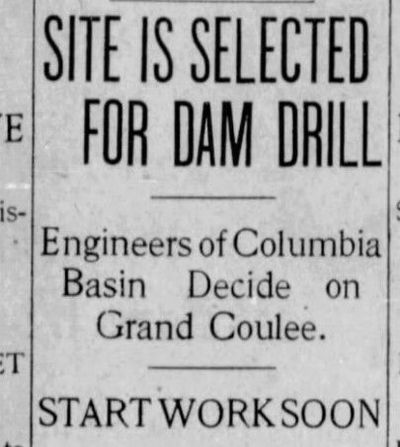100 years ago in Washington: The first hints of what would become the Grand Coulee Dam were emerging

Federal and state engineers decided on an experimental drilling site – “the head of Grand Coulee” – for a possible Columbia Basin irrigation project.
This is one of the earliest mentions of the Grand Coulee as a great dam site.
“The location, is considered, as far as is now known, to be greatly superior to any other site within feasible distance of the project,” one of the engineers said.
The other sites under consideration – listed as “Box Canyon, North Bend and Hell Gate” – all had significant disadvantages.
“The (Ground Coulee) dam would be of much less height than at the other sites,” the engineer said. “Being located at the head of a coulee, which it is planned to use as a canal, the pumping plant could lift the water … up into the coulee.”
Engineers still had to determine if the bedrock was suitable at the Grand Coulee site.
This was one of the first indications that the basin might best be irrigated from the Columbia River, instead of from the Pend Oreille River, as also proposed.
From the festival beat: Organizers of the first Apple Blossom Day festival in the Spokane Valley were astonished when far more than 5,000 people showed up for the barbecue outside the Otis Orchards clubhouse.
Bands played and people devoured barbecue beef, local cider and apple pies. Roads all around were congested and vacant yards were filled with parked cars.
The organizers said it would become an annual event.
On this day
(From Associated Press)
1970: Just after midnight, Phillip Lafayette Gibbs and James Earl Green, two Black students at Jackson State College in Mississippi, were killed as police opened fire during student protests.